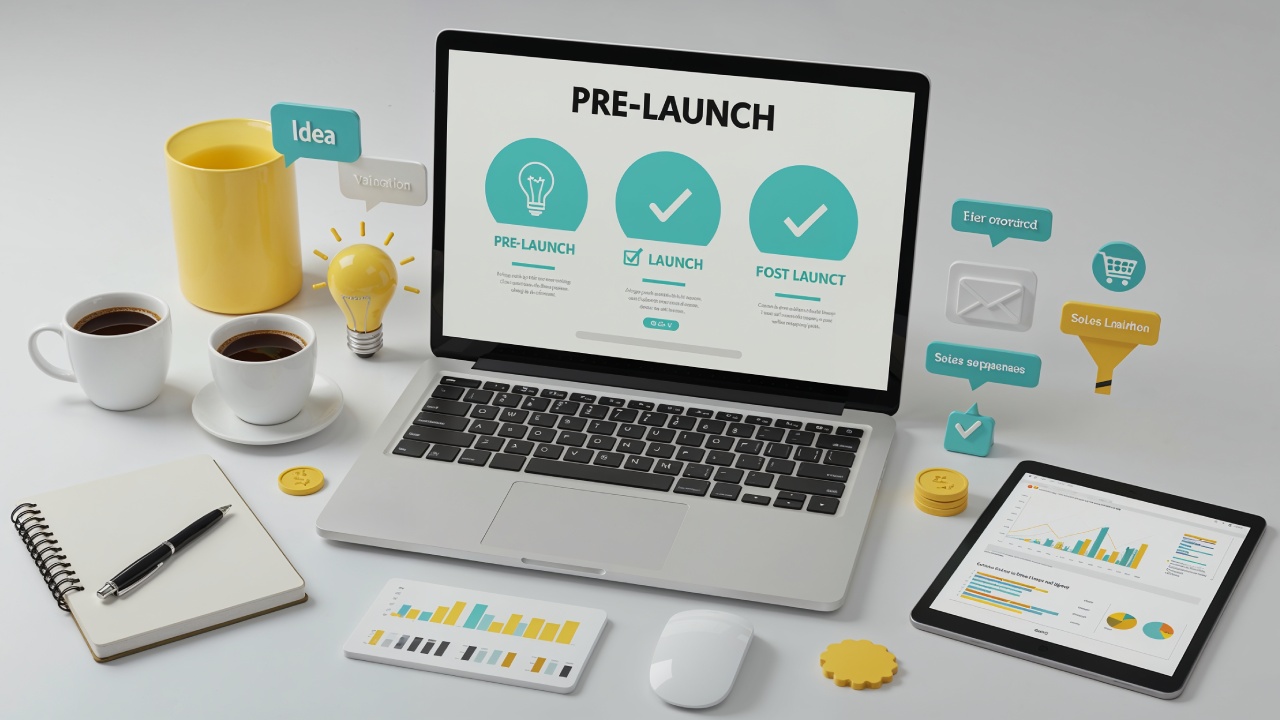Contents
There’s a wealth of creativity and efficiency that comes with the art of repurposing content. By transforming your existing materials into multiple information products, you can maximize your efforts and reach a broader audience. Whether it’s turning a blog post into an e-book, a webinar, or a series of podcasts, this strategy allows you to extract more value from your original work. In this post, you’ll discover practical techniques to effectively repurpose your content, ensuring that your hard work continues to pay off in various formats and platforms.
Key Takeaways:
- Repurposing content allows creators to maximize their original work by transforming it into various formats, such as ebooks, podcasts, or online courses, reaching a wider audience.
- Creating multiple information products from a single piece of content enhances engagement and provides different learning experiences, catering to diverse preferences of consumers.
- Strategically planning and organizing content repurposing can save time and resources while boosting overall productivity and generating additional revenue streams.
Understanding Content Repurposing
While content is a valuable asset for any creator, understanding how to effectively repurpose it allows you to extend its reach and impact. Repurposing involves transforming existing content into various formats or applications, enabling you to cater to different audiences without reinventing the wheel. This strategy not only maximizes your initial efforts but also boosts your visibility across multiple platforms.
Definition and Importance of Repurposing Content
With content repurposing, you take your existing material—such as blog posts, videos, or podcasts—and adapt it into new formats like eBooks, infographics, or webinars. This practice is vital because it amplifies your message, giving new life to your ideas and helping you engage a wider audience effectively.
Benefits of Repurposing Content
By repurposing content, you can save time and resources while enhancing your brand’s visibility. You’re able to reach diverse audience types that prefer different content formats, ultimately leading to increased engagement and traffic. Moreover, this approach builds authority and establishes your expertise in your niche.
Definition of content repurposing extends beyond mere adaptation; it is about strategically leveraging your existing work. This not only allows you to create more substantial value from what you’ve already produced but also reinforces your message as it reaches new and varied contexts. Consequently, you can cultivate a loyal following while maximizing your content’s potential, leading to greater recognition in your field.
Identifying Content Assets
Clearly, understanding what content you already have at your disposal is the first step in the repurposing process. By identifying your existing content assets, you can leverage them to create multiple information products that cater to different audiences and formats. This not only maximizes your effort but also enhances the value of your original creations, allowing you to reach a broader audience with less time and resources.
Evaluating Existing Content
Content evaluation involves analyzing your current materials to determine their relevance, quality, and potential for repurposing. Look for content that has performed well previously, resonates with your audience, or aligns with your current goals. This evaluation will help you understand which pieces can be transformed into new formats or is worth expanding on.
Choosing the Right Content for Repurposing
Among the factors to consider when selecting content for repurposing are its performance metrics and audience engagement. You should prioritize content that has historically garnered interest and interaction. This ensures that your efforts yield significant returns while effectively addressing your audience’s needs.
Content that is evergreen or holds a timeless quality is particularly suitable for repurposing, as it can remain relevant over an extended period. Additionally, consider various forms of media your content could take, such as turning a popular blog post into an informative video or a comprehensive guide. By selecting the right pieces, you maximize the potential of your content and cater to diverse learning preferences within your audience.
Creative Formats for Repurposing Content
Not every piece of content needs to stay in its original form. Embracing diverse formats not only enhances your reach but also engages various audience segments. Think outside the box by turning written material into visual art or transforming audio recordings into written guides. By adapting your content, you can provide value to different learning styles and preferences while maximizing your investment in content creation.
Transforming Blog Posts into E-books
Across the digital landscape, blog posts can serve as the foundation for comprehensive e-books. By expanding on your existing articles, you can create a cohesive narrative or instructional guide that research deeper into your topic. This approach not only adds value for your readers but also positions you as an authority in your niche, ultimately boosting your credibility and attracting a dedicated audience.
Turning Webinars into Podcasts
With the growing popularity of podcasts, you can easily transform your informative webinars into engaging audio content. By extracting key points and discussions from your live sessions, you create an alternative avenue for your audience to absorb information. This also allows you to reach listeners who prefer audio formats, subsequently broadening your audience base.
This transition is beneficial not just for reaching a different audience but also for leveraging the valuable insights shared during the webinars. You can edit the recordings to highlight the most compelling moments, providing an enriching experience for listeners. Ensuring the audio quality is top-notch and adding a catchy introduction can further enhance the impact of your podcast. As you harness this format, you not only diversify your content offerings but also create lasting connections with your audience through engaging discussions.
Strategies for Effective Repurposing
Unlike many believe, repurposing content isn’t merely about recycling the same material; it’s about strategically transforming it into different formats that convey your message in engaging ways. To effectively repurpose your content, consider your existing resources, including blog posts, videos, and social media updates, and think about how they can be adapted for various platforms. Utilize a systematic approach to identify the key points and themes that can resonate across different formats while keeping the essence intact.
Popular Formats and Channels
Popular formats for repurposing include e-books, podcasts, infographics, and webinars. Each channel offers a unique way to reach diverse audiences and can enhance the visibility of your original content. By understanding where your target audience spends their time online, you can select the most effective format and channel that align with their preferences, ensuring your content achieves maximum impact.
Tailoring Content for Different Audiences
Against the tendency to produce one-size-fits-all content, you should focus on tailoring your materials to meet the unique preferences and needs of your various target audiences. This approach not only enhances engagement but also increases the relevance of your messaging. By segmenting your audience based on demographics, interests, and behaviors, you can customize your repurposed content to resonate more deeply, fostering stronger connections and encouraging action from each group.
Content can be adapted in numerous ways to cater to different audiences. For instance, a technical blog post can become a simplified infographic for visual learners, while a detailed report could be distilled into a concise podcast episode for those who prefer audio. Additionally, consider the context in which your audience consumes content—while professionals may appreciate in-depth webinars, beginners might benefit from shorter, more accessible video tutorials. By strategically reformatting and adjusting the tone of your original content, you can engage various segments effectively and expand your reach.
Case Studies of Successful Repurposing
To explore effective content repurposing, consider these case studies that showcase impressive results:
- HubSpot turned a single blog post into a comprehensive guide, generating over 500 downloads.
- Neil Patel repurposed a webinar into a series of YouTube videos, increasing his viewership by 300%.
- The Content Marketing Institute created an eBook from whitepapers, leading to a 40% rise in new leads.
- Social Media Examiner transformed podcasts into blog posts, resulting in a 50% increase in site traffic.
For more insights, check out The Art of Content Repurposing: Boost Your Creative Brand.
Brands that Excel in Repurposing
Repurposing your content can significantly enhance brand visibility and engagement. Brands like Canva and Buffer have utilized this strategy effectively, turning blog posts into infographics and social media snippets, amplifying their reach and attracting diverse audiences.
Lessons Learned from Real-World Examples
Successful content repurposing demonstrates the importance of versatility. Many brands have learned how to connect with their audience across multiple platforms, ensuring that your content not only resonates well but also remains evergreen. By varying your approach and leveraging different formats, you can continually engage your audience.
But it’s vital to analyze each case carefully. Look at what worked for others and adapt those strategies to fit your unique voice and brand identity. Assess the platforms your audience frequents and tailor your content accordingly, allowing for maximum reach and impact. Creating a streamlined repurposing process will enable you to maintain consistency in your messaging while saving time and resources.
Tools and Resources for Content Repurposing
After mastering the art of repurposing, it’s crucial to equip yourself with the right tools and resources. Dive into The Art of Repurposing Content Across Platforms to discover various solutions tailored for maximizing your content’s potential.
Software and Tools
Between content creation and distribution, using the right software can streamline your efforts and enhance your productivity. Tools like Canva for design, Anchor for podcasting, and Hootsuite for scheduling across multiple platforms can simplify the repurposing process, ensuring your content reaches a broader audience effortlessly.
Additional Resources and Communities
For ongoing support and insights, engaging with additional resources and community forums can be incredibly beneficial. Platforms like Facebook Groups and Reddit communities offer a wealth of knowledge and shared experiences from fellow content creators who are navigating similar challenges in repurposing their work.
But tapping into these communities not only enriches your knowledge but also allows you to network with like-minded individuals. You can exchange tips, learn about new strategies, and gain inspiration from others who have successfully repurposed their content. Engaging with these resources will keep you informed of the latest trends and best practices in the ever-evolving digital landscape.
Summing up
To wrap up, mastering the art of repurposing content allows you to maximize your efforts by transforming a single source into diverse products that cater to different audiences. By leveraging your existing content, you enhance its value, save time, and expand your reach across various platforms. Embrace the creativity in reimagining your work, and watch as each repurposed piece drives engagement, boosts your brand, and establishes your authority in your field. With a strategic approach, your content can continually resonate, providing lasting benefits and opportunities for growth.








